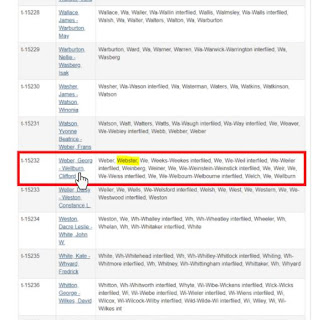Library and Archives Canada has a large collection of immigration records which can be found
here. Despite having such a vast collection, the passenger lists are not fully indexed. Unlike many of their other databases, you cant search for a specific person. The search method varies with collection, however the most common options are by shipping information or by browsing through alphabetically organized immigration forms. So how do you find someone when you can't search for them by name? There are a few techniques that you can use:
1. Check the Census Information
When you pay attention to the entire family unit on a census it can help you establish a timeframe for when the immigration might have occurred, especially if they didnt come over all at the same time. First check if the immigration year is given on the census. This column was first introduced on the 1851 census in response to the large influx of Irish famine immigrants. This year is not always accurate but can provide a good start. Next look at where each person in the family was born and when. Maybe the first few children were born in the home land and the youngest was born in Canada. The age gap between these two children would provide a range of when the immigration could have occurred. The age gap between children can also be useful if you know the husband came over in advance of the wife and children.
2. Use a Third Party Website
Library and Archives have not indexed their collections, however third party websites (such as Ancestry) have. You dont need a paid subscription to leverage this resource. Viewing a free hint will often tell you enough to find the record online at bac-lac. The only thing that the hint might not tell you is what page of the ship manifest you ancestor can be found on.
The easiest way to explain this process is by using an example. Lets take a look at Mary Ellen Webster. I knew that she originally immigrated to Toronto from Lancashire, England in 1914 but what I didnt know was that she returned to visit her family in 1922, returning in 1923. I made this discovery after receiving the following Ancestry hint:
At the top of this record we see that it belongs to the Ocean Arrivals, Form 30A, 1919-1924 collection. Now we need to look through this collection on bac-lac to find the record.
Step 1: Scroll down to the "List of Content of Microfilm"
Step 2: Look at the names column and identify what alphabetical range the surname of the person you are searching for falls into. You may need to look through several pages to find this.
Step 3: Click on the link in the "names" column to view the Form 30A records
Step 4: Browse through the microfilm either one page at a time or skipping through using the
"page: _" above the microfilm.
Step 5: When you find the record your looking for save it using the following steps:
"View PDF" > select downward arrow in top right to download. The file will be saved to your downloads.
I will run through an example in a later post explaining how to find someone who is listed on a conventional passenger list.
About the Form 30A Collection
All immigrants to Canada between the years of 1919 and 1924 were required to complete a Form 30A. This was a far more detailed than the passengers lists/ship manifests which preceded them. These forms were completed by the passenger as opposed to a crew member meaning that they contain primary information. An added bonus of the passenger completing this record is that the information is not only more accurate in content but also in spelling. If your ancestor had an accent there was a fair chance that their name would have been misspelled on the former passenger list but not on a Form 30A record.
The form was two sided however it was not uncommon to find the back side incomplete. The front contained the following information:
- name of vessel
- date of sailing
- class of ticket
- passenger's name
- age
- marital status and name of spouse if married
- occupation in departed country
- intended occupation in Canada
- Birthplace
- race
- citizenship
- religion
- reason for coming to Canada
- duration of stay
- have they lived in Canada before and if so where
- IF APPLICABLE: first port of arrival in Canada and last port of departure
- IF APPLICABLE: reason for last departure
- sum of money in their possession when arriving in Canada
- Can they read and what language
- Who paid their passage
- where are they going
- nearest relative in country they departed from (name, relation, and address)
- yes/no to diseases and disabilities
- signature of passenger
The contents on the back of the form changed over slightly over this period. Depending on when the person immigrated it could have contained the following information:
- physical description
- declaration of booking agent
- if they were detained, and if so why
One of the biggest challenges with this collection is that it is alphabetical meaning that a family's records may not all be side by side. For example, Mary Ellen Webster was travelling with her daughter and two granddaughters however they had a different surname and therefore their records were on an entirely different microfilm.






Comments
Post a Comment